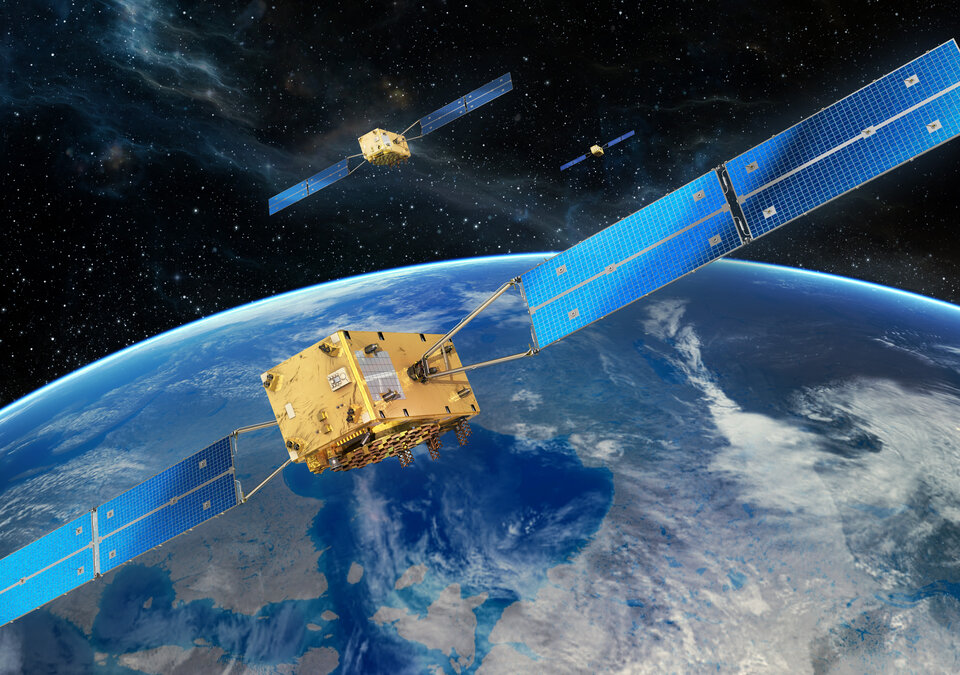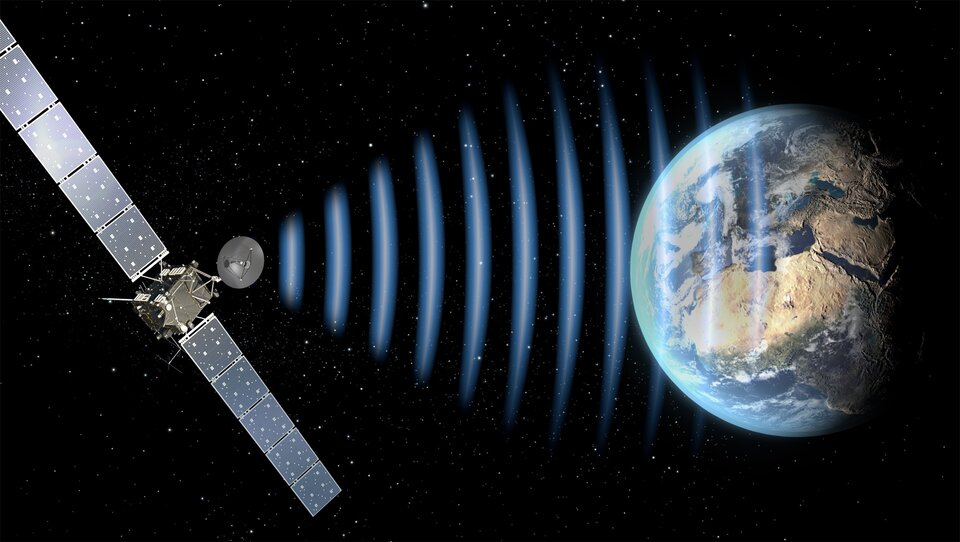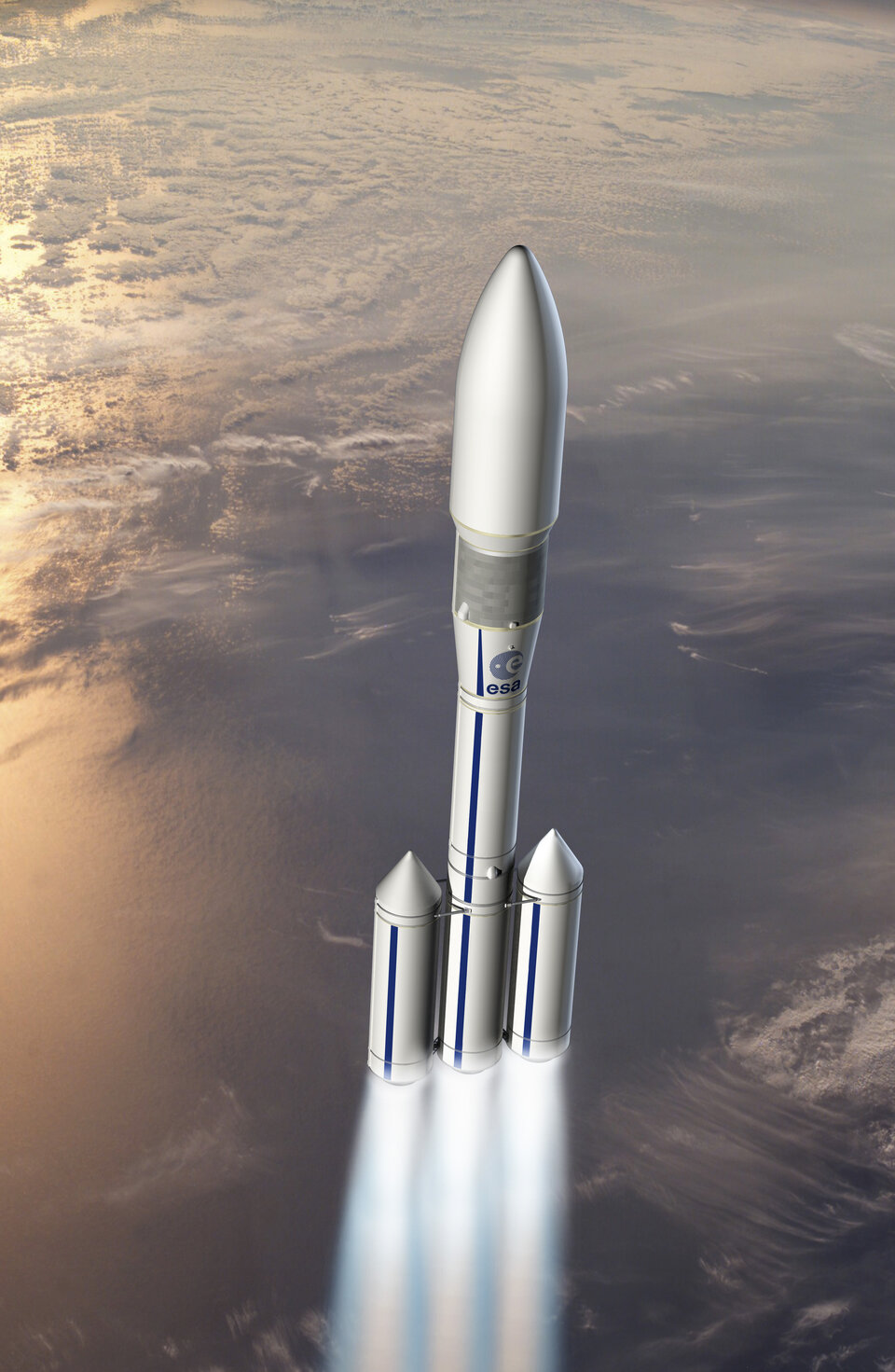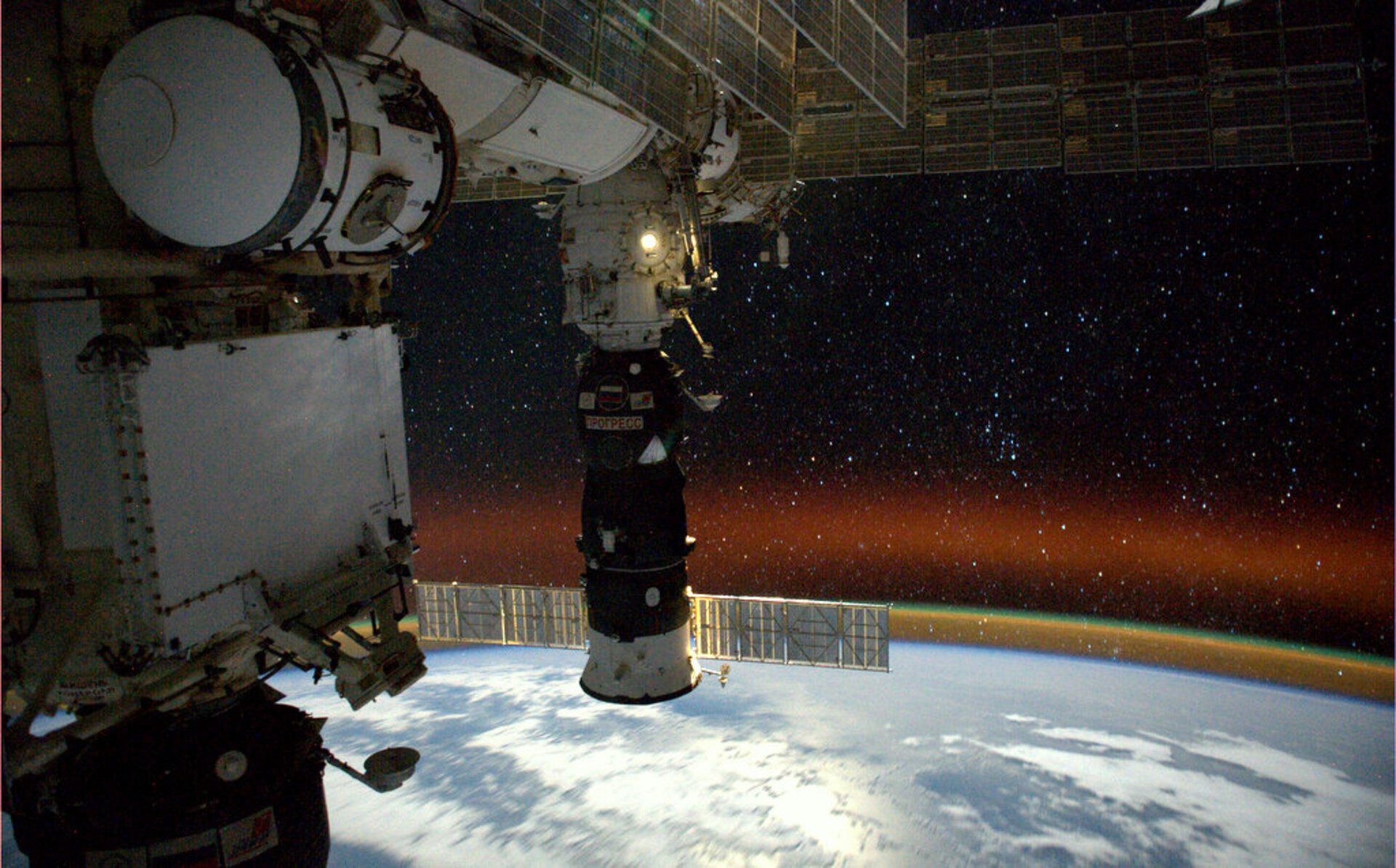The European Space Agency director general – in interview
Jean-Jacques Dordain talks exclusively to Policy Review editor Dean Carroll.
The International Space Station is, like CERN, often held up as a model of what countries working together across the globe can achieve in terms of collaboration – and I guess the same could be said of the European Space Agency. But what actual scientific advances have resulted from the work carried out on the space station and the work done at ESA respectively?
“The International Space Station is mankind’s foothold into the cosmos. It is teaching us how to live and work in space for extended periods. We are discovering how the human body reacts to weightlessness, radiation and other conditions that will face future travellers to destinations such as mars and the asteroids. We are learning how to assemble the large and complicated ships that will carry people to other planets. The station is the first stepping-stone as mankind ventures beyond our home planet.
“In addition to being the most daring and complex engineering achievement in human history, the space station is one of history’s most successful examples of cooperation among the world’s governments. For the last decade, countries with diverse and very different goals – and aspirations – have come together to build the space station. These nations have achieved something together that none could have achieved alone.
“The ISS is designed to carry out science and technology activities but its greatest contribution to the world will probably be the lessons it teaches us about co-operation among nations. Without the determination and sometimes difficult diplomacy behind the numerous agreements that made the project possible, the contributions of the partner countries never could have come together in this magnificent and permanently inhabited outpost racing over our heads at more than 28,000 kilometres per hour.
“The Columbus laboratory is our largest contribution to the ISS. Hundreds of experiments across a multitude of different disciplines are performed today in this Europe-built permanently inhabited laboratory in space. Scientific communities throughout Europe and beyond its borders are already reaping the benefits of this investment. Day after day, international crews including many ESA astronauts are active at the heart of this truly international endeavour. This year, two ESA astronauts will reach the ISS on their six-month long missions: Alexander Gerst from Germany and Samantha Cristoforetti, from Italy. Timothy Peake of the United Kingdom and Andreas Mogesen from Denmark are scheduled for flight in 2015.
“The ESA’s Columbus laboratory has yielded spectacular results and advances in several disciplines. In the field of materials sciences for instance, our research in Columbus has allowed to improve casting processes for producing lightweight materials for use in airplane engines; and lighter airplane engines equate in consistent fuel saving which in turn produce less pollution in the atmosphere – making us more environment friendly.
“Our research in Columbus also delivers concrete results in life sciences and in medical research in the areas of cardiovascular function, neuroscience, osteology, immunology and wound healing with plasmas – leading for instance to progress in the fight against osteoporosis. Add this to further improvements in fluid science, plasma physics, radiation protection, biology, technology and ESA has a depth of research activities that influence – in the end – every aspect of our daily lives.
“The International Space Station is also a great classroom in space. The need for education in an ever-increasing knowledge-based society is unquestionable and education is also part of ESA’s mandate. Astronauts living and working in the ISS devote part of their time to capture the attention and stimulate the interest of student, to attract them to get involved in particular scientific and technical disciplines. This is supported by the dissemination on the ground of teaching material and by the development of a range of educational activities from primary school to university level.
“The ESA has been an invaluable partner in the space station team, providing incredible on-orbit capabilities that also include a state-of-the-art resupply vehicle named Automated Transfer Vehicle. After the first four ATV’s were named after Jules Verne, Johannes Kepler, Edoardo Amaldi and Albert Einstein it is now the turn of Belgian physicist Georges Lemaitre, father of the Big-Bang theory, to reach the International Space Station. I am of course talking about the fifth Automated Transfer Vehicle and the last of the family that will be launched to the ISS in June on an Ariane 5 from French Guiana. Since 2008, and in average every year, an ATV has delivered about six to seven tonnes of cargo some 400 kilometres above earth. After launch the ATV automatically navigates to a precision docking with the station’s Russian Zvezda module. It remains attached to the ISS for up to six months before re-entering the atmosphere and burning up in a controlled manner together with several tonnes of waste from the station.
“These important European contributions have been possible thanks to the tireless efforts of dedicated scientists and engineers from across Europe and the sustained commitment of successive governments of the member states of ESA. In the near future, Europe will also provide the service module of the National Aeronautics and Space Administration’s new Orion Multipurpose Crew Vehicle as an in-kind contribution – barter element – for ISS operations for 2017 to 2020. This decision, taken by ministers in charge for space at the end of 2012, was strategically important for us as it enabled a new kind of cooperation between ESA and NASA on the future human space transportation systems.”
What will be the big advances in space over the next few decades – will we see upgraded passenger planes leaving the earth’s atmosphere to speed up aviation journey times, mass space tourism or even the militarisation of space?
“As travelling by plane has nowadays become commonplace and affordable by many people, I believe that in a couple of decades from now more and more private citizens will be able to benefit from ‘upgraded passenger planes’ as you call them and fly from Paris to Sydney in a couple of hours – perhaps enjoying a few moments of weightlessness as they ride. However space tourism is not contemplated in the mandate of ESA or any other space agency, as it is clearly an activity for the private sector.
“Moreover, generally speaking manned missions are not the top priority for ESA in the years to come – at least not a priority in scheduling terms because we have other more immediate concerns such as science, services for citizens and industrial competitiveness. This said we do need to continue to explore and reach outer space. I think exploration is also a wonderful driver for international cooperation, for technology and for science. With the 10 per cent of our budget we devote to human spaceflight we can do large-scale exploration missions, as long as we do them on the basis of international cooperation. Exploration is the area where international cooperation is essential and, which cannot be envisaged solely on a national basis only. It is also an area of worldwide interest since exploring space helps us prepare for our future on planet earth.
“To start with, we are concentrating our efforts on robotic exploration and for this we have set up – in cooperation with Roscosmos of Russia and some contributions from NASA – two ExoMars missions running from 2016 and 2018. ExoMars will investigate the Martian environment and focus particularly on astro-biological issues. Through ExoMars we will develop and demonstrate new technologies for planetary exploration with the long-term view of a future mars sample return mission and, later on, human exploration of the red planet. We are also engaging in new lunar exploration activities, starting with contributing to Russian missions.

“Finally, as concerns military space activities, this represents so far the largest deficit of Europe as compared to other space powers. Space in Europe has been started as a civilian activity and military space activities are limited in size and scope so far. However there is an increasing number of programmes that, even though civilian may have military or security-related users – such as Galileo or Copernicus. The ESA itself is not a civilian agency. It is an agency for peaceful purposes and may have programmes with a security component. If and when Europe needs space as an enabling tool for its security and defence policy, ESA will be prepared to develop the required programmes.”
What would you classify as the big successes of the European Space Agency over the last decade and in what areas or projects are there room for major improvements still? And could you just outline some of the major missions currently being worked on in simple language that us non-scientists will understand, and elaborate on the potential benefits for society in the future?
“It is difficult for me to privilege one mission over another. In the last 10 years, all ESA missions have been crowned with success and I have been very privileged to be the director general of an organisation with such a high score of picture perfect missions. Let me just quote a few of these successes starting from the most recent one and maybe the most spectacular.

“On January 20, our teams at ESA’s control centre – in Germany – succeeded in waking-up the Rosetta space probe from hibernation. The Rosetta ‘comet chaser’ was launched in 2004 onboard an Ariane 5 and has been in orbit since then. Some 31 months ago, it was placed in deep hibernation before waking-up to continue its long journey towards its destination. In August, this year it will reach its target – the comet Churyumov-Gerasimenko – to perform what is probably one of the most spectacular scientific mission imagined so far: chasing the comet though its journey in the inner solar system for a while, at close distance and at very high speed, and then dropping a lander on its nucleus.
“In November, the 100 kilogramme Philae lander will be dropped on the four kilometre-wide nucleus of the comet moving at a speed of 135.000 kilometres per hour. After reaching the nucleus, Philae and its on-board instruments will focus on the composition and structure of the comet nucleus material; a drill will peek more than 20 centimetres into the subsurface to collect samples for inspection in an on-board mini-laboratory. This data will be transmitted back to us on earth, relayed via the mother spacecraft – Rosetta – that will have remained in orbit around the comet to study it up close with the set of instruments it carries on board.
“Comets are considered the primitive building blocks of the solar system and it is likely they helped to seed earth with water, perhaps even the ingredients for life. But many fundamental questions about these enigmatic objects remain and through its comprehensive in situ study of comet Churyumov-Gerasimenko, Rosetta aims to unlock the secrets contained within – like the Rosetta Stone revolutionised our understanding of the past, allowing historians to decipher the mysterious hieroglyphics. Our Rosetta’s mission will allow scientists to unlock the mysteries of the oldest building blocks of our solar system – the comets.
“Always in the field of science, our missions yielded spectacular results thanks to the Planck spacecraft and have hit the first page of newspapers and magazines worldwide. Planck, our ‘time machine’ has mapped the cosmic microwave background, the relic radiation from the Big Bang, in unprecedented detail for over four years and ended its mission in October 2013 – before being manoeuvred in a permanently safe configuration.
“Another unique mission of recent years was Herschel, a space observatory to study the formation and evolution of stars. It accomplished a successful four and a half year mission and was deactivated in June 2013. Finally, Gaia, launched at the end of 2013. It will make a highly accurate three-dimensional map of our galaxy – the Milky Way – pinpointing the positions of one billion stars in order to better understand its composition, formation and evolution.

“But there are numerous other areas where our successes are equally spectacular. The Ariane launcher family alone, for instance, has provided an unprecedented return on investment and it dominates the world’s commercial market through its operator Arianespace. We have had 57 successes to date, without counting the six Soyuz and the two Vega successful launches that have also taken place in the last years from the Guiana Space Centre – Europe’s spaceport in French Guiana.
“Europe’s savoir-faire in the launchers sector is recognised as being at the vanguard worldwide but there is always room for improvement. This is why for instance we are already working at improving Ariane 5 with the Ariane 5-ME version. The qualification flight of this modernised version of Ariane 5, which thanks to its re-ignitable upper stage will allow us to serve a wider range of missions, is scheduled for mid-2018 – followed by a gradual introduction into service. Ariane 5 ME will replace the current Ariane 5 ECA and Ariane 5 ES and will become Europe’s workhorse launcher until the arrival of the new Ariane 6.
“Ariane 6 is a completely new launcher. The start of its preparatory activities was approved in November 2012 by the European ministers responsible for space meeting in Naples, Italy. At the end of the year, meeting again at ministerial level – this time in Luxembourg – our governing body, the council, will decide on the full implementation of the programme.
“The objective of Ariane 6 is to maintain guaranteed autonomous and competitive access to space for Europe, while minimising exploitation costs and suppressing support to exploitation with public money. To reduce design and production costs, Ariane 6 exploits maximum commonalities with the cryogenic re-ignitable upper stage of Ariane 5 ME. The exploitation cost of the Ariane 6 launch system is its key driver: we aim at getting the launch price tag down to €70m. A first flight is targeted for 2021.
“Space also helps us understand our home planet and we invest the largest part of our yearly budget in earth observation. Many key aspects of monitoring and managing our planet can be adequately addresses only by observing our planet from a vantage point in space. This is why we have developed missions to investigate the atmosphere, the oceans, the ice caps, the winds, ocean currents and even earth’s gravity field with the aim to better understand our environment and climate and give scientists and authorities valuable tools for a careful management of the resources we have. In order for our children and future generations to inherit a planet as clean and as secure as possible, we will provide these tools to help them understand how our planet functions, how it evolves and how human activities interact with it.
“We have also been heavily contributing – in cooperation with the European Organisation for the Exploitation of Meteorological Satellites - to the development of improved generations of weather forecast satellites. Independent studies conducted in recent years prove that improved weather forecast due to Meteosat alone equate in €125m in annual cost savings for all industries – construction, shipping, transports and so on – and €137m in saving of lives and reduction in environmental damage. Agriculture alone saves €30m and civil aviation €11m per year thanks to our meteorological satellites.
“In the coming years, we will transform our longstanding experience in earth observing satellites into a series of operational services for environment and security. The Copernicus programme – previously known as GMES for Global Monitoring for Environment and Security – is being developed by us in cooperation with the European Commission, and it will provide operational services in three major environmental themes: global change, including management of treaty commitments; natural and human-made hazards; and environmental stress.
“In addition it caters for all-weather high-resolution imagery to cope with peacekeeping and security requirements. Copernicus is based on dedicated satellites – the Sentinels – and contributing missions provided by member states. The first of the Sentinel satellite family is due for launch in spring this year. Sentinel-1 is a polar-orbiting satellite that will provide radar coverage over Europe, Canada and main shipping routes regardless of weather conditions. Radar data will be delivered within an hour of acquisition – a huge improvement over previous and existing systems. Sentinel-1 will be followed by two other companion spacecraft in 2015. The Sentinel-4 payload is to be carried on board Meteosat Third Generation while Met-Op Second generation will carry the Sentinel-5 mission in the period 2017-2020.
“In the domain of telecommunications and integrated applications, we took a giant leap in July last year with the launch of the high-power Alphasat satellite on Ariane 5. Alphasat is the fruit of a public private partnership between ESA and Inmarsat, an excellent example of how ESA is boosting Europe’s competitiveness and growth. Alphasat has been the first telecommunication satellite to employ the new Alphabus platform. A satellite platform – or ‘bus’ – is a standardised structure that contains all necessary subsystems to let the payload do its mission-specific work: power generation and distribution, attitude control and propulsion. Alphabus is now available on the commercial market, supplied by a European industrial consortium, and aimed at larger telecommunication satellites that supply direct-to-home television broadcasting, digital audio broadcasting, broadband access and mobile services.
“Satellite navigation has also become part a major part of our activities as well as a new field for Europe since we started together with the European Commission, in the early 2000s, the development of Europe’s own satellite navigation infrastructure Galileo. Whereas the American global positioning system we are used to, and the Russian Glonass, were originally developed for military purposes, Europe’s civil Galileo system will offer a guaranteed service and will be interoperable with GPS and Glonass so that a receiver can use any satellite in any system. Galileo will deliver the best ever accuracy worldwide.
“It all started with GIOVE-A in 2005, the first Galileo test satellite that remained in operation till 2012. GIOVE-B (2008-12) then successfully demonstrated the highly innovative technologies. Four Galileo satellites for in-orbit validation of the system were launched between 2011 and 2012 and six Galileo satellites are slated for launch this year to start reaching the full operational capability – 30 satellites in total. The performances measured from the four satellites already in orbit, in terms of localisation and dating ability, are already two times better than the requirements – much better than current GPS performance. It is a good start and the opening of the initial services – Open Service, Search & Rescue, Public Regulated Service – is expected from early 2015 onwards.
I read during my research that you were an astronaut candidate. Is that true and, if so, why didn’t your pursue this career path?
“What you found out during your research is true. I never imagined not working for the space industry. I started my sixth grade – the first year of high school according to the French system – on October 1, 1957, and to celebrate my start of high school the Soviets launched Sputnik on October 4. And I obtained my engineering diploma, and this is authentic, on July 20, 1969. And to celebrate my diploma, Neil Armstrong set foot on the moon.
“So for me, all my education and all my youth has been nourished by that phenomenal acceleration of space activities at that time; as it took less than four years from Sputnik – a small ball shaped machine with its beep beep – to Gagarin, the first man in space. And it took less than 10 years to go from Gagarin to Armstrong’s foot on the moon.
“When I was in middle high school – I was in a boarding school – I spent the nights with two or three friends hiding from our watchmen to listen to the radio about the rendezvous of Apollo and Gemini. It was an extraordinary period. In spite of many sleepless nights, I got my engineering diploma and at the end of the summer of that same year I ‘entered space’.
“As the years went by, it was natural for me to apply to become an astronaut. From 1976 to 1983, I was the coordinator of space activities at The Office National d’Etudes et de Recherches Aérospatiales until I was appointed director of fundamental physics. During this period, I applied to become an astronaut and I was among the first five French astronaut candidates to be selected by The Centre National d’Etudes Spatiales for the ESA Spacelab 1 programme.
“But at that time ESA was not the fantastic organisation we know today – allow me a joke please. They did not choose me then and I was not retained to become an astronaut. However, I did find a back-up job, becoming the director general of ESA. I am almost ready to conclude but I will never leave space, or rather space will never leave me; even when I will have left the agency.”
Indeed, your third term as director general of the European Space Agency finishes in June 2015. What are the big ambitions you want to achieve or at least put in place before you step down from; and what do you plan to do next – another role in the public sector or a business position, or retirement?
“Before my third term finishes, I have plenty of things to do and objectives to achieve. This year, we have a ministerial council in December. It will be instrumental for the future of Europe in space as it will shape the decade to come both in terms of large infrastructure programmes – launchers and ISS exploitation – and in terms of the evolution of ESA; in particular as regards to its relations with the European Union.
“The success of this ministerial council and the successes of the many missions to be launched or completed this year – the first Sentinel launch, the first Galileo constellation launches, the launch of ATV-5 resupply vehicle to the ISS and of the IXV experimental vehicle on Vega, the missions of Alexander Gerst and Samantha Cristoforetti to the International Space Station, the arrival of Rosetta and the first Gaia results are my objectives for this year. During this period, we will also celebrate 50 years of European co-operation in space. So you see, I have enough to do for the future of ESA in 2014 without being worried about my future. I enjoy every day I live and I shall just continue onwards.”




